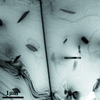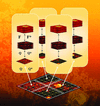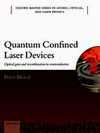issue contents
August 2016 issue

Cover illustration: Simulated reciprocal space maps for lateral crystals of different dimensions. Courtesy of Punegov et al. [J. Appl. Cryst. (2016), 49, 1190-1202].
editorial
Free 

The latest virtual special issue of Journal of Applied Crystallography (//journals.iucr.org/special_issues/2016/ccpfel) presents tools for a range of topics in free-electron laser research such as simulation of experiments, online monitoring of data collection, selection of hits, diagnostics of data quality, data management, data analysis and structure determination for both nanocrystallography and single-particle diffractive imaging.
research papers
Open  access
access
 access
accessA procedure is described for polarized neutron reflectometry when the Zeeman corrections are significant, which occurs when both the magnetic anisotropy and the applied magnetic field are significant. Calculations and a recommended procedure for an example system are provided.
Open  access
access
 access
accessEnergy-resolved neutron imaging is used for a nondestructive study of bulk internal microstructure, elemental composition and distribution of voids in dissimilar metal-alloy welds of ∼10 mm thickness. All these characteristics are measured simultaneously in one experiment with a few hundred micrometre spatial resolution.
An approach to solving an ill posed inverse problem of determining actual residual stresses in thin films and compact solid materials using X-ray diffraction is described.
Coarse-grained form factors are developed from a novel computational method for amino acid residues to enhance the computational efficiency of solution small-angle X-ray scattering modelling. The method is based on fitting the Fourier transform of protein electron density, and the resulting protein scattering intensity profiles are consistent with theoretical atomistic profiles and experimental data.
A quantitative measure for the scale-dependent heterogeneity of a structure is designed, which can be calculated from small-angle scattering data. This measure generalizes the notion of correlation function, and it leads to novel data analysis procedures.
The composition, crystal structure and precipitation crystallography of a newfound MgxAl2−xGd precipitate are characterized by Cs-corrected scanning transmission electron microscopy.
A mechanical assembly has been successfully designed to combine a MYTHEN 1K with a point detector, and is proved facile for the angular calibration of individual pixels. In `flat-plate transmission' geometry, which is frequently used in various operando experiments, straightforward corrections can be efficiently made to compensate for sample displacement away from the diffractometer center.
The two-dimensional dynamical theory of X-ray Bragg–Laue diffraction has been developed for deformed lateral crystalline structures having a rectangular cross section. This approach allows one to calculate rocking curves as well as reciprocal space maps for both the transmitted and reflected wavefields. The approach can be used in coherent diffraction imaging to simulate far-field diffraction patterns produced by relatively large deformed crystals.
The simultaneous determination of tensile and shear strains in crystals and multilayers using three Bragg reflections of X-rays is described.
Open  access
access
 access
accessRotation of X-ray polarization at the glitches of a monochromator composed of single crystals of silicon is observed. This effect can be explained by a model taking full account of the X-ray source, the effects of multiple-beam dynamical diffraction, and the coherent and Compton scattering from the sample.
The orientation relationships (ORs) between the Al matrix and Si2Hf precipitates in an Al–Si–Mg–Hf alloy were investigated. The habit planes of four ORs are rationalized and the formation of Si2Hf precipitates with a nanobelt-like morphology is interpreted on the basis of the near-coincident site lattice distribution.
Bovine cornea was studied with scanning small-angle X-ray scattering microscopy, by using both synchrotron radiation and a microfocus laboratory source. The supramolecular structure of the collagen fibers is explored thanks to the combination of statistical (adaptive binning and canonical correlation analysis) and crystallographic (pair distribution function analysis) approaches.
Numerous applications in X-ray crystal optics and instrumentation require ultra-thin perfect diamond single crystals, just a few micrometres to a few tens of micrometres thick, properly functioning under Bragg diffraction conditions. Reported here are the successful manufacture and characterization of diamond drumhead crystals, monolithic crystal structures composed of a thin membrane furnished with a surrounding solid collar, using picosecond laser milling.
The SHARP framework provides fast images from high-throughput ptychographic datasets and a corner stone for demanding higher-dimensional analysis such as spectro-ptychography or tomo-ptychography.
A study of TaC precipitate stability in a Co–Re-based alloy for high-temperature application is presented. Complementary methods such as small-angle neutron scattering, X-ray diffraction, neutron diffraction and scanning electron microscopy characterize the precipitates under various heat treatments.
This is a real-time in situ study of the growth and annealing of mixtures of the organic semiconductors α-sexithiophene (6T) and C60. Interesting crystal-phase behaviour for different growth conditions and phase transformations during annealing are reported.
Download citation


Download citation


The crystal structure and morphological and crystallographic features of the microstructure in 4O modulated martensite of an NiMnSn alloy were systematically studied, with the aim of providing some fundamental knowledge to aid the understanding of the alloy's multifunctional properties and further performance optimization.
CCDC reference: 1487845
A computationally efficient method to solve the Takagi–Taupin equations for a large deformed crystal
The behaviour of the Takagi–Taupin equations in the presence of a strain field with a spatially slowly varying component is studied. Based on the results, a computationally efficient method to solve the Takagi–Taupin equations for such a strain field is developed and demonstrated.
A quantitative measure for comparison functions on the unit sphere is suggested. A solution is presented to the problem of a quantitative comparison of pole figures with the same indexes but measured for different samples.
A custom free-form approach is used for reconstruction of grazing-incidence X-ray reflectivity from periodic multilayers; simulated and experimental data fits are presented.
The determination of the cationic distribution in complex oxide thin films has been shown to be possible through a methodological processing of resonant X-ray diffraction data with a crystallography-based approach.
short communications
This short communication presents a symmetrized Bingham distribution for the modeling of crystallographic texture which can account for arbitrary crystallographic and statistical sample (resulting from material processing) symmetries. Additionally, an efficient computational scheme is presented for parameter estimation.
computer programs
Open  access
access
 access
accessA description is given of a single-particle X-ray imaging reconstruction and simulation package using the expand–maximize–compress algorithm, named Dragonfly.
Open  access
access
 access
accessAn overview of how the well established CFEL–ASG Software Suite (CASS) can be used for serial femtosecond crystallography data is given.
Open  access
access
 access
accessThe WavePropaGator (WPG) package is a new interactive cross-platform open-source software framework for modeling of coherent and partially coherent X-ray wavefront propagation. The WPG addresses the needs of beamline scientists and user groups to facilitate the design, optimization and improvement of X-ray optics to meet their experimental requirements. The paper presents a general description of the package and gives some recent application examples.
Open  access
access
 access
accessCondor, an open-source simulation tool to predict X-ray scattering amplitudes for flash X-ray imaging experiments, is introduced.
The data acquisition and data management systems used at the Linac Coherent Light Source X-ray free-electron laser are described.
A computer program for the retrieval of space-group information in several settings is presented, and the generator-containing space-group symbols on which the program is based are described and fully detailed for three-dimensional space groups.
EosFit7-GUI is a new full graphical user interface for analysing and fitting equations of state.
laboratory notes
A portable light-delivery device for home in situ photocrystallographic experiments is described and tested.
The small-angle neutron scattering (SANS) spectrometer Suanni at the China Mianyang Research Reactor has successfully been upgraded from a pinhole SANS instrument to a focusing SANS instrument with ultra-thin biconcave MgF2 focusing lenses. It is found that introducing lenses in the current experimental methodology can either enhance the flux or achieve a smaller Qmin.
obituaries
Free 

book reviews
Free 



 journal menu
journal menu






















































